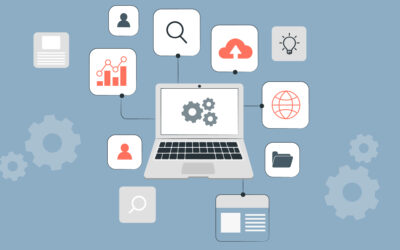This week, hundreds of thousands, probably millions of people are confined to their homes, taking refuge from the coronavirus. Organizations all over the world have been taking proactive steps to ensure that their employees stay safe during the outbreak of COVID 19. Luckily we live in an age where we can conduct some business over the internet or in flexible digital environments.
While remote working has been on the rise this past decade, millions are suddenly pushed into this now, many for the first time. This coronavirus pandemic has radically altered work for the foreseeable future. This time is confusing for employees as well as employers. With little time to prepare beforehand and draw up clear remote work policies, organizations are not entirely ready for the challenge. Project teams understandably have little clarity about operational and project goals. Project managers and leaders, too, are likely left wondering how to track project efforts and monitor individual contributions in light of this sudden shift. This is what inspired Team Xebrio to compile a guide to working from home and being productive. A big part of a project manager’s job is solving problems. Now is the time when this skill is truly put to the test.
Solving ‘Work From Home’ Problems
Remote work is challenging for several reasons. Not everyone likes working from home. Many swear by the sparks that fly and the spontaneity that comes from working with people face to face as opposed to being separated by digital-glass screens. Although there are some who actively look for work from home jobs, most people miss the social engagement and back and forth that are necessary for productive teamwork..
Business Insider’s healthcare editor, Zach Tracer, has managed a team of five for over a year. He says, “It won’t be easy, so don’t be too hard on yourself. When I started working from home, people told me it could take three to six months to adjust. I think that’s pretty accurate.“
The following is a list of challenges of working from home, along with their solutions.
- Loneliness:
Sure, working alone, without the everyday annoyances of the office, seems like a fantastic idea. Still, multiple studies and surveys point to isolation being the biggest detriment to working remotely, especially from home. Loneliness goes against the intrinsic nature of humans. After all, socializing and existing in groups is in our DNA.
A couple of years ago, a team of economists looked at Ctrip, a 16,000-employee, multinational Chinese travel company. For research, the company had randomly assigned a chunk of its call-center staff to work from home. The results of this experiment were encouraging. Teams worked more, quit less, were happier with their jobs, and had great work-life balance. The company saved more than $1,000 per employee in office space.
However, when Ctrip applied this work-structure to the entire company, it was ineffective and led to a drop in productivity over time. The first complaint employees had was the inability to work in isolation. If only that complaint can be addressed, remote work delivers all-round benefits.
Solution:
Make sure that project managers and team members all video conference together once every week, ideally every day. This is especially relevant in the current circumstances, since it acts as a check-in, and offers support & solace in shared misfortune. Also, make sure that you increase the length of your one on ones, so team members feel needed and listened to.
It’s a good idea to include small-talk in one on ones. Most people are missing this natural, spontaneous interaction that happens in offices and reinforces their friendships. Loneliness impacts us more than we think it does, given the direct co-relation of isolation and physical health. Project managers should engage with their teams on apps that provide collaboration and team communication. It’s easy to get lost in your own world without a formal setting. These quick check-ins and messages prevent such instances.
- Inability to supervise face-to-face
Many people require managerial supervision, communication, and support to be able to work productively. Project managers, too, trust face to face supervision to collect feedback, instruct, and guide teammates. However, the primary concern for most managers is whether their teammates work hard enough or efficiently enough.
Solution:
Make your video calls count. This is the closest you’ll come to face to face supervision since the spontaneity of collaborative work and visual cues in communication are preserved to some extent. While you can make use of the screen-sharing feature most of the video calling apps have, it is difficult and impractical to monitor and review work for all teammates like this. Invest in project management or task management software. These tools have provisions to make tracking project work, project progress, and all project communication easy.

- Inaccessibility of information and communication
This sudden shift does not leave many project teams prepared for, or even expecting the difficulty in locating project conversations, decisions, and resources from other teammates. To add to it, the usual medium and method of communication have changed. This cumulative effect puts an added strain on teams already struggling to cope with the sudden change in routine.
Solution:
Teams need to pivot to digital solutions to tackle these problems. As and how you go figuring out remote work, you need to accumulate a repository of the routinely required information using collaboration tools. These measures will ensure smooth and quick access to information. Gaps in communication can surface even still. Project leaders should exhibit and encourage a positive and co-operative attitude, which will bring about an approach of sensitivity and mutual understanding to help each other out in times of need.
- Inability to work through distractions
In the initial stages of remote working – when you’re just getting used to it, and especially when you’ve had to make a sudden change, the lines between the home and the office are blurred. It is not only difficult to concentrate when it is not your regular work environment, but when it is your home, you have to settle for suboptimal workspaces. Teammates can also be suddenly inundated with childcare or familial responsibility owing to workplaces, schools, and daycare closures. Remember how his two adorable children gatecrashed Prof. Robert Kelly’s BBC News interview? While it went viral from all the hilarity that ensued, that could be what your teammates are dealing with! Staying motivated can be difficult. On the other hand, for some, unplugging from work and relaxing is difficult.
Solution:
Allow team members a flexible schedule. Ask teammates when they’re the most productive are and help them record their schedules. Explore productivity tools. Once a routine appears to be set, ask them to log hours and record efforts so that the absence of a dedicated chunk of work-time does not hinder productivity. Consider adopting well-known techniques of increasing your productivity. Adopt tools that allow task tracking and time & effort tracking. But go easy on your people. This is a difficult time for most. Reach out to people and make yourself available for listening to them. A good leader is a compassionate one.
- Information security
Unforeseen virtual work disrupts the regular, secure way of information and data exchange. Data is one of the most valuable resources of an organization. Keeping it safe is a real challenge when all business is supposed to be carried out over the internet. There can also be inadvertent security breaches as a result of data being exposed to family members.
Solution:
To contain unintentional security breaches and protect project data, mandate teammates and family members to record their hours of computer usage for work. This can be done via a system of logging in and logging out of virtual work systems every day.
This period is especially challenging for all of us. Productivity can go down, but tools that allow you to organize, monitor, and communicate will salvage the situation to a certain extent. After all, the time and effort exerted in office commutes are zeroed.

But there are no foolproof measures to prevent all of the challenges to remote work, specifically the misuse of time in remote work. Project managers and leaders cannot adopt an approach of suspicion or anger.
Jonathan Segal, an expert in the laws governing remote work, emphasizes, “In a time of crisis, we need to focus on the vast majority of employees who do the right thing, and give ourselves the time and perspective to focus on the bigger-picture business continuity planning.“
How Can Managers Support Remote Teams?
Employers and organizations are up against a big challenge – enabling their entire workforce to work from home. This is an extraordinary task, and there are bound to hiccups. However, the direct strain of management falls on project managers. They are the ones who have to act fast and save projects. Here is how managers can support their teams better –
Quickly take stock of the tech stack
Figure out which teammates can work from home and what tools can be used to work unaffected, collaborate seamlessly, and even be productive. Ideally, together with decision-makers and employers, prepare a ‘rapid action’ task force, to reconfigure leave policies. Make a list of activities that you usually monitor and of responsibilities that are shared by teammates. Plan to track and monitor these activities using project requirement management software. Make sure everyone has access to information and resources. If you’re managing some blue-collar colleagues as well, ensure that they’re connected and feel provided for.
Keep your team motivated in trying times
Help your people get psychologically ready for remote work. It can be hard, but keep them motivated to stay productive and remind them of common and organizational goals. Explain to them the benefits of remote work, provide tips for being productive in such environments, and encourage them to explore remote work to find a pattern that works for them the best. Let them savor the saved time, exercise, and maintain the normalcy of routine and daily habits.
Relay all information
Make sure all teams know what is going on. Working from home, people tend to feel out of the loop. This could even give rise to ‘work separation anxiety.’ But project managers should help people stay updated at all times and about all details regarding the progress of the project. Similarly, coach your people to accept and retain information, but not excessively worry about revenue, organizational goals, and deliverables.
Communication with clients and external stakeholders suffers too. The best way to deal with these is securely collaborating with them and brushing them up on an overview of your project’s progress with milestone tracking software. This tool allows a bird’s eye view into projects based on their progress milestones.
Now that you feel at ease, having read how to take care of your team, read on to explore tips that will help you work from home efficiently.
Best Practices of Working From Home
- Keep your routine the same
Follow your morning routine, as you would if you were going to the office. Start early, get dressed and look presentable (this goes a long way if you have video conferences later in the workday). If you have the habit of catching up on the news on your way to work, make sure you dedicate some time to it before you begin working. This sequence of activities serves as a positive work trigger for your brain since it always ends with beginning productive project work, much like a Pavlovian response. - Select the right workspace
Make sure you build the right kind of home office. It should mimic your desk set up at the office while also being comfortable. Your makeshift office should not be your bed or your dining table, where your brain is accustomed to relax or eat and hang out with family. It should be a separate space where you can mentally and physically disconnect from your home and truly step away when you finish. Make sure your desk is clean. There is inherent wisdom in the old adage “A cluttered desk is a sign a cluttered mind.”

- Plan more for the day
Start by making a plan of what all you wish to do today. Commit to doing more, so that you end up doing your best. With so many distractions and obstacles to work, planning for more helps you be productive and accomplish a substantial amount of work. - Build clear boundaries
Let your family or roommates know that you’re working or that you’ll be telecommunicating a little ahead of time so that they can give you the time you need, and you’ll not have to deal with distractions and disturbances. Consider putting up a sign that will let others know whether you’re working or on break. Some people who have young children put up signs that will make it clear to children to occupy themselves otherwise. However, some people tend to work better with pets around, looking at them as silent cheerleaders keeping you company while you work. - Work in productivity bursts
Analyze the way you work. Keep track of how much you’ve accomplished and when. This will help you organically build a remote work schedule that works for you since your focus and the desire to work ebbs and flows. Research has proven that when you do the most tedious work in these sprints of productivity, you work your hardest.
Author and productivity expert Travis Bradberry says, “Frequent-break-takers outshine the competition by getting more done with more focus during their working time. There’s a neurological reason for that – the human brain naturally works in bursts of high activity that last about an hour, and then it switches to low activity for a while. When that happens, it’s in your best interest to take a break.“
If you are cooped up with kids, try to find productive hours around their schedules. Isn’t the best, most productive time the time your little hell-raiser naps? - Stay away from social media
In today’s hyper-aware world, the current overdose of information surrounding COVID -19 is amplified. It is best to take a break from the news cycle and ensure emotional well-being. Constant news updates only cause distractions and hamper your concentration. You can sign out of all social media accounts so that it’s harder for you to steal a quick look that can disrupt your mental space. - Take ‘stepping away’ breaks
When you take breaks, don’t look at cat videos on YouTube, step away from your bed, take a stroll in your backyard or your balcony, or just look out the window for a while. The idea is to take a clean mental break. Also, put aside some time for exercise. There are definite cognitive benefits to exercise, as studies have shown.

- Talk to your team
Talk to your teammates, informally. Ask them how they’re holding up and whether they need your help with work. Similarly, make sure you make yourself available and visible to people through collaboration and communication apps, and that people know what your status is and when you’re on break. - End at the same time every day
One of the major drawbacks of working from home is having to be unable to unplug from work. Set a definite start and end time to not let your work bleed into your time.
These habits will make working from home more comfortable. But, not everything mentioned in this list may work for everyone. Everyone is wired differently. The key is to figure out what works for you the best.
Is There a Bright Side to This?
Working from home can be quite fun, depending on what you make of it. Instead of complaining about how you have to work from home if you are grateful that you GET to work from the luxury of your home and have some semblance of normalcy, things will seem infinitely better.
The Show Must Go On
We are creatures of habit, and we must recognize that we have given into the notion that the place of work needs to be different from the place we sleep in. But if we realign our expectations and take a closer look at remote work statistics from the past couple of years, we can realize that there is a paradigm shift happening in the way humans have worked. Perhaps we’re just getting started on the way we will always work in the future – from the comfort of our homes.






0 Comments